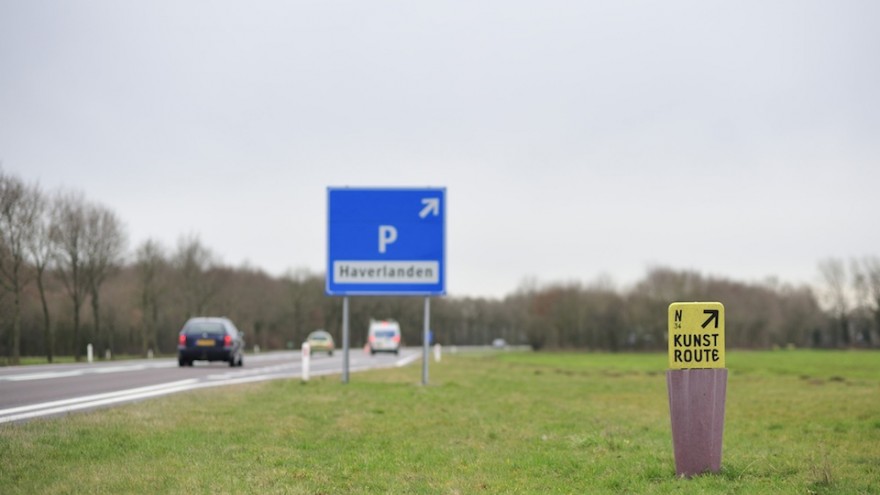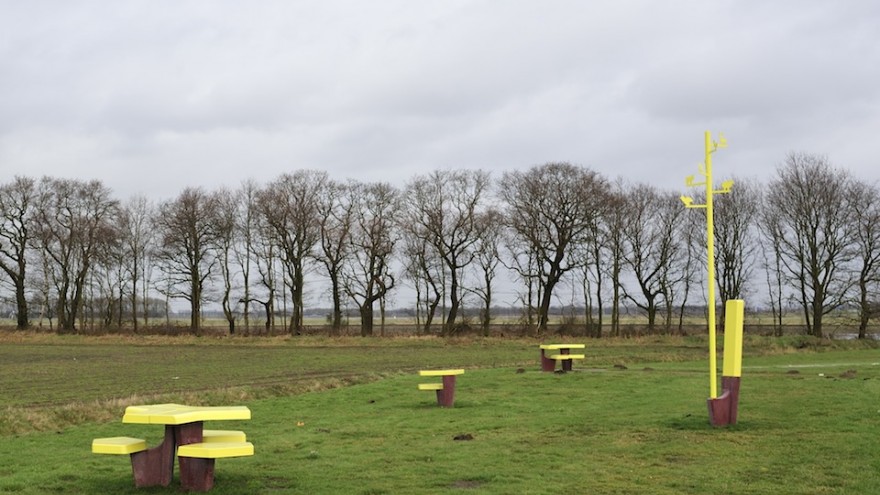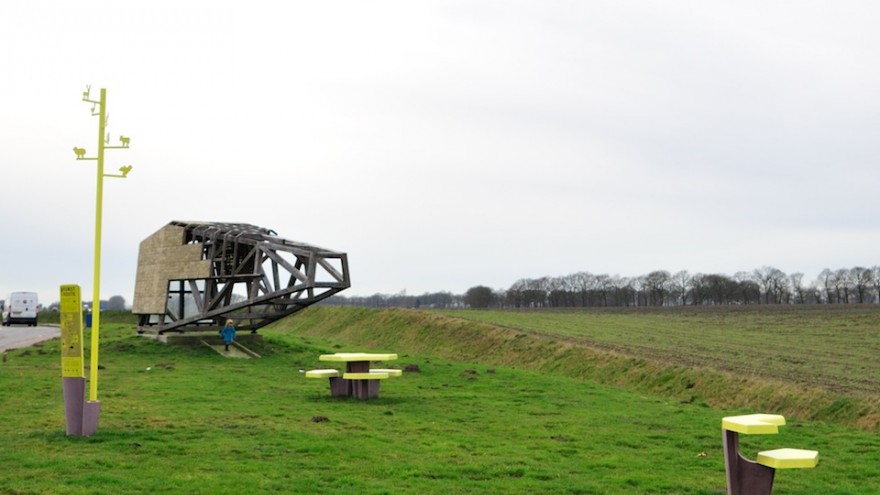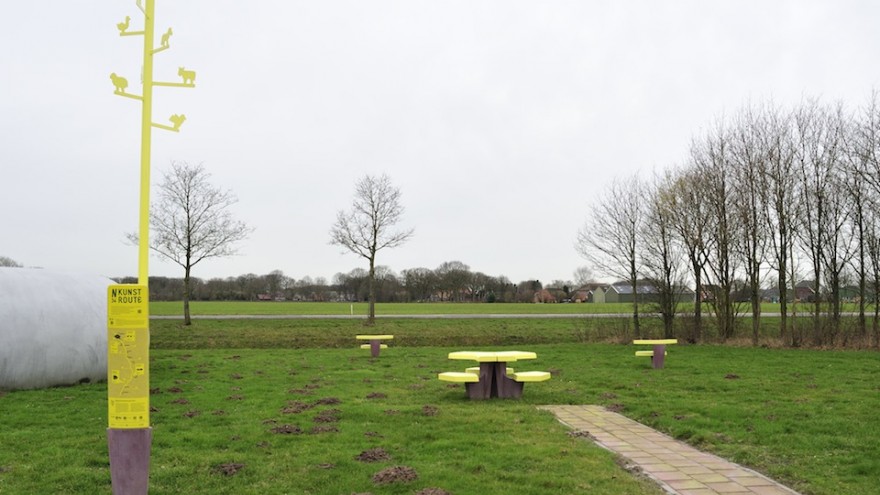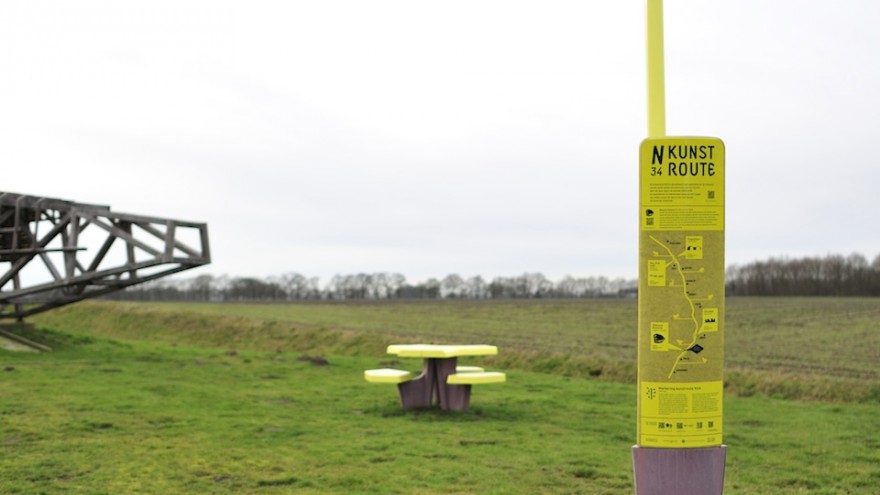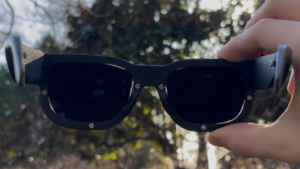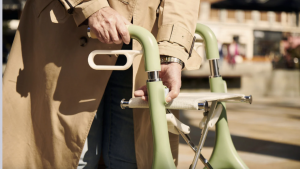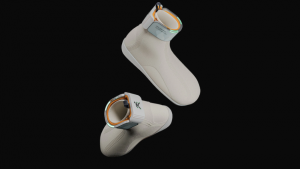While the name sounds like it might be a cousin of the famous hot sauce, "Nabasco" is actually short for Nature Based Composites - a new sustainable material consisting of natural fibres such as flax, jute, coconut and hemp bound with biobased or polyester resin. It is the first outdoor composite material that is 100% renewable.
Dutch designer Ineke Hans has put this nifty natural material to use in her design for road markings and resting spots along the N34 route in Provincie Drenthe in the Netherlands.
The N34, which began as an old trade road to the north of Holland, has recently been revitalised through the installation of artwork at resting and picnic spots along the route. Hans was approached to create signs and visual links between these spots. She developed a modular system of elements. The same base is used for the milestone markers, information poles and seats, while a single modular seat can also be transformed into benches or picnic tables depending on how they are configured.
Nabasco in a distinct lemony yellow was used for the seats, table surfaces and base-tops. The material is durable, making it resistant to vandalism and ensuring its longevity outdoors.
The raw materials of flax and hemp used in Nabasco and cultivated in the Dutch province also give the designs a sense of provenance.
“These materials more or less 'belong' to the Provincie Drenthe and fit with the 'green heart' that this province likes to affiliate itself with," Hans says.
Hans' street furniture and signage is one of the first public projects to use Nabasco, which was developed in the Netherlands. Using natural fibres has several advantages over traditional fibres such as glass. Natural fibres require less energy to produce and fewer chemicals to bond to the resin. In most cases the natural fibres are lighter than glass, resulting in significant fuel savings during transportation and reductions in carbon dioxide emissions yields in applications such as trains or cars.
While the smooth, hard surface of the composite can be coloured, coated or painted, visible natural fibres also give the composite an appealing aesthetic. The material has a multitude of possible applications from sanitaryware to panelling in the transport industry, and from a substitute for polycarbonate in chairs to building façade cladding.

